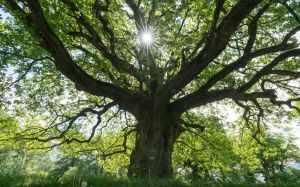American hardwoods develop deforestation-free validation
The American Hardwood Export Council is progressing the establishment of a legality and deforestation-free validation system for US hardwoods to meet the requirements of the EU Deforestation Regulation (EUDR).
In an interview, AHEC European Director David Venables said the economic slowdown and uncertain geopolitical situation had seen US hardwood exports to Europe contract 40% in the first nine months of 2023. Nevertheless, the total was still 235,000m3, plus US hardwood mills had the flexibility and dynamism to respond swiftly when demand recovers, and they continue to see Europe as a key market into the future.
Mr Venables acknowledged that the EUDR poses challenges. A particular issue, given the fragmentation of forest ownership in the US, is its geolocation requirements for sources timber and wood products. But, he said, the US hardwood forest is one of the ‘world’s greatest breadbaskets of sustainable wood fibre’ and the new validation system would provide hard data underlining its environmental credentials.
We are developing a solution to demonstrate legal and sustainable supply using risk assessment, satellite and data technology,
said Mr Venables. It will enable the US hardwood industry to make a global legality and deforestation-free claim. In fact, we believe it can provide more credibility than established third-party certification schemes that have failed to address the challenge of small non-industrial forest ownership, which is the dominant factor in US hardwood forests.
There may still be uncertainty surrounding how the EUDR will operate, he added. But data from the newly launched EU-Observatory of the Joint Research Council of the EC, which will be the main resource for EUDR risk assessment by the EU regulators, shows that the deforestation risk associated with US hardwoods is ‘to all intents and purposes, zero’.
AHEC’s marketing focus through 2024 will also be on promoting and encouraging markets, including Europe, to accept a greater variety of species of US hardwood to further underpin their sustainability. We will continue to argue the importance of making full use of what the forest provides,
said Mr Venables. By concentrating on a handful of species we’re underutilizing the wider resource and risk stressing supply of the more popular ones. By the same rationale, we should also be making use of a wider spread of grades.
Red oak is a particular focus for AHEC, given it is the most prolific species in the US hardwood forest and among the most versatile. And it reports, demand in Europe is increasing, notably among ‘the larger manufacturing industries of Italy and Spain, and from specialised joinery manufacturers in northern Europe’.
Overall, our main objective for the year ahead must be to further strengthen the rhetoric around the climate and wider environmental benefits of using US hardwood – including the fact that we’re making most sustainable use of the resource,
said Mr Venables. This is especially important in relation to non-wood substitutes, which, make no mistake, remain our biggest competitive threat. All the talk is about net zero and low carbon, but we have a material that is actually climate positive, and we must play that card. No doubt there will be more opportunities to state the case for timber in 2024 and win the environmental argument.

 Seite drucken
Seite drucken
Kommentare